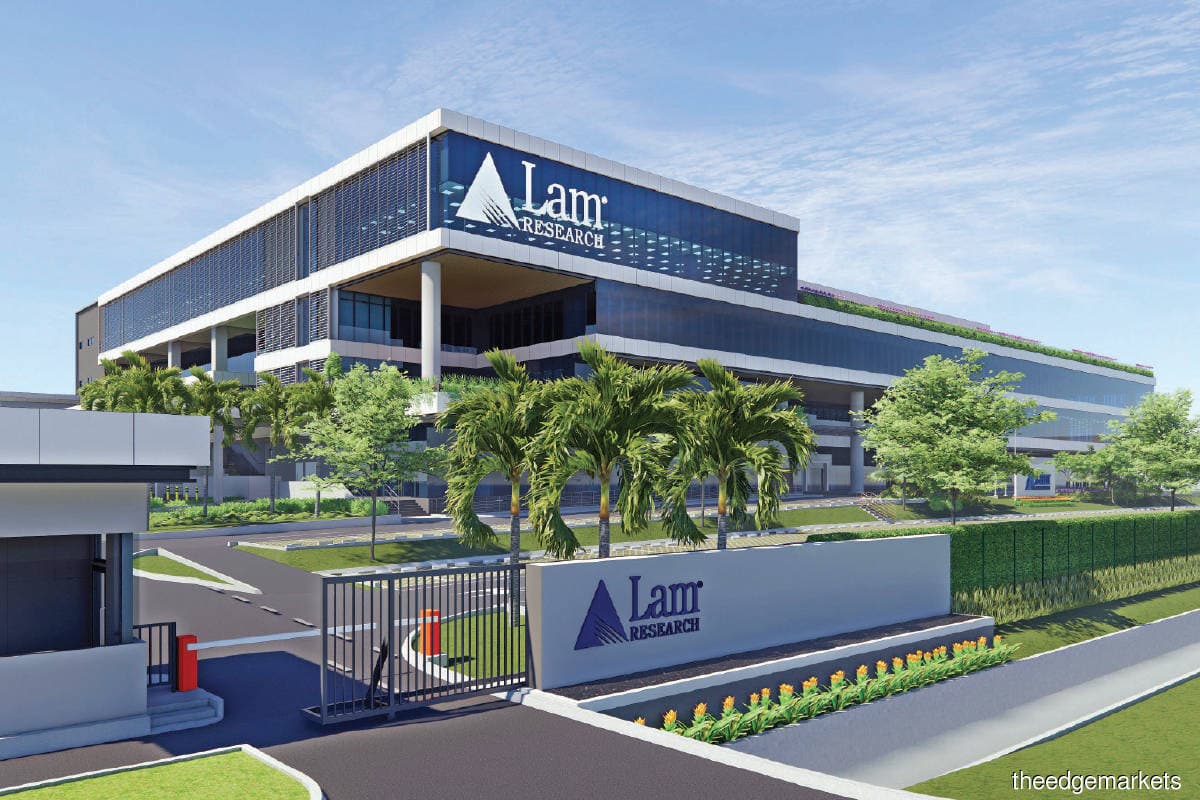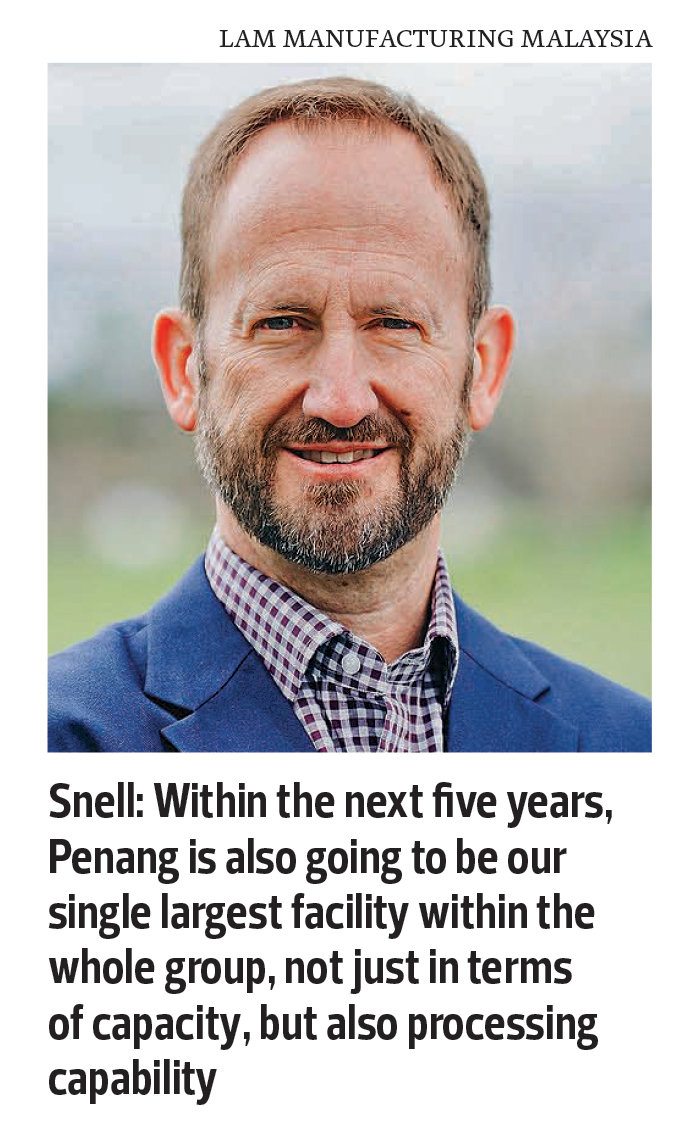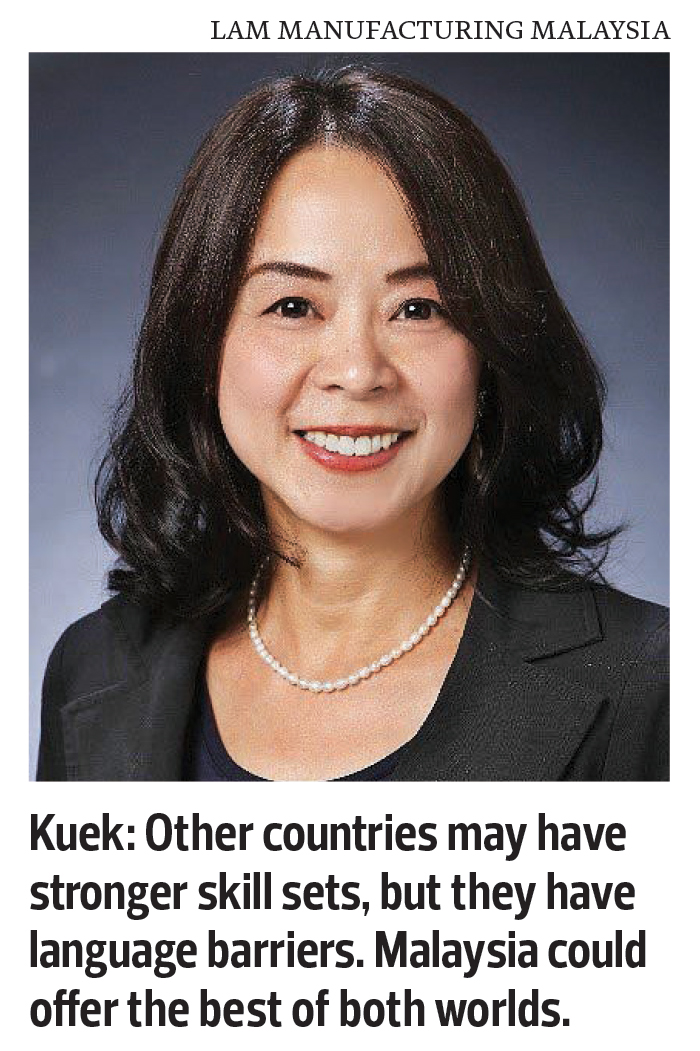
This article first appeared in The Edge Malaysia Weekly on November 30, 2020 - December 6, 2020
IF you have ever wondered about the electronic devices we use every day, you may be surprised to learn that Lam Research is involved in nearly all the advanced chips built today.
“Today, each leading-edge device that has any memory or logic chip in it has, at some point, been made using our equipment,” says Lam Manufacturing Malaysia general manager Soon Kuek. The US-based global supplier of innovative wafer fabrication equipment and services to the semiconductor industry was founded in Santa Clara, California, by Chinese-born American technology entrepreneur Dr David K Lam four decades ago.
This is very special year for Lam Research — and by extension, Malaysia — as the chip-gear giant has invested a total of US$225 million (close to RM1 billion) for a new manufacturing facility at Batu Kawan Industrial Park, Penang, as part of its 40th anniversary celebrations. The investment was made via Lam Manufacturing Malaysia.
If everything goes to plan, the soon-to-be-operational 700,000 sq ft advanced technology production plant will become the largest facility within the whole Lam Research group, which already has a strong manufacturing presence in the US, Austria and South Korea.
Corporate vice-president of manufacturing Mike Snell points out that Lam Research is the first wafer fabrication equipment maker to set up manufacturing operations in Malaysia.
“In fact, Penang is our first and only production facility in Southeast Asia. Within the next five years, Penang is also going to be our single largest facility within the whole group, not just in terms of capacity, but also processing capability. We have a really ambitious plan here,” he tells The Edge in a video interview.
Snell previously served as vice-president of manufacturing, and has been the managing director of manufacturing at Lam Research’s sites in Tualatin, Oregon, and Osan, Korea.
“One of the reasons we’ve come to Malaysia is because we foresee a need for more capacity. After a period of slow growth, we believe the industry is going to experience extremely rapid growth in the coming years.”
Snell says it makes sense for Lam Research to diversify geographically, as the group needs to expand its work capacity for both the supply chain and manufacturing aspects.
“Today, most of our production is located in the west coast of the US, namely California (Fremont and Livermore) and Oregon (Tualatin). So, we want it to be somewhere that has a different risk,” he explains.
Snell reveals that Lam Research has been working on the Penang project for more than two years.
“We made a decision to come here in September last year, and after various discussions with MIDA (Malaysian Investment Development Authority), we announced in February this year that we were coming to Malaysia and investing in Penang.”
As transport and logistics are crucial factors for Lam Research’s geographical expansion plan — all of its finished products are essentially shipped by air freight — Penang’s well-established infrastructure was a major draw.
“We need to find a place that has a very strong logistic network, a very established supplier base and a big supply of skills. Eventually, we think that Malaysia — Penang in particular — could offer us the best balance. This is going to be one of the most important operations for us,” he stresses.
Large talent pool in Penang
Penang-born Kuek cites another reason Malaysia was picked: not only is it rare for a Southeast Asian country to have top technology and technical skill sets, the country also boasts reasonably good language skills.
“Other countries may have stronger skill sets, but they have language barriers. Malaysia could offer the best of both worlds — we could get great talent that could communicate globally, using the international language of English,” she tells The Edge.
When it comes to hiring, Kuek says Lam Research realises that there is a big talent pool, especially for high technology skill sets and resources, in Penang.
“So far, we have not been disappointed. In fact, we are really happy about our recruitments,” says Kuek, who spent over 20 years living and working in the US.
Prior to her present role, she was senior director of supply chain management, as well as senior supplier business manager and engineering manager at Lam Research.
Commenting on the supply chain and infrastructure in Malaysia, Kuek acknowledges that there is a certain level of maturity in the country’s electrical and electronics (E&E) sector, which, she says, has a “very bright, robust and bullish” future.
“However, we think that at some point, the demand is going to outstrip supply. Therefore, one thing that we intend to develop strategically is to invest in the development and growth of the local talents here,” she says. She urges Malaysia to continue to invest in talent and science, technology, engineering and mathematics (STEM), as well as to encourage and provide opportunities for language skill development.
“Industry leaders should also continue to give back to the communities, and the government should continue to find ways to promote local businesses. All this will translate into talent building,” she adds.
Going back to the Penang plans, Kuek says the group is still on schedule to open its new facility in Batu Kawan by mid-2021, notwithstanding the Covid-19 pandemic.
On further investments in the future, she remarks, “Of course, there could be. But for now, we just want to focus on our first project in Batu Kawan, which is a major investment, and let things grow organically.”
Encouraging industry prospects
Kuek says it will be good news for everyone in the semiconductor industry should the wafer fabrication equipment market continue to grow at the forecast rate.
“Our direct clients are the foundries and chip makers. We have a strong customer base in the US, China and Southeast Asia,” she notes.
The global market for wafer fabrication equipment has grown significantly over the past few decades, and Snell says the projected demand by US-based industry association, Semiconductor Equipment & Materials International (SEMI), for the coming years is very optimistic.
“Just a couple of years ago, the global spending on wafer fabrication equipment was about US$40 billion. Today, it is estimated that the market is worth around US$65 billion to US$70 billion. More importantly, the market is expected to continue to grow strongly,” he adds.
He says the global equipment market is dominated by only a handful of companies, including Lam Research, although they do not compete directly in all market segments.
“Lam Research has always focused on the wafer fabrication equipment business. It is such a strong industry that we are in and offers broad opportunities, so much so that we never really needed to diversify into other areas. We have been doing what we do best.”
Interestingly, geopolitical concerns were not among the factors that were considered as the decision to invest in Penang was made before the US-China trade conflict intensified.
“Our main objective is really to expand our operation and capacity in order to better serve our global clients. Despite the uncertainty amid the trade war and pandemic, we still have strong demand from the US, China and all around the world,” Snell explains, adding that Lam Research will comply with all the regulations and strictly follow local laws wherever it goes.
As the overall semiconductor industry is still growing rapidly, Snell says the big semiconductor companies have to compete against each other, be they from the US, China, Taiwan or South Korea.
“All of them want to win, so all of them have to invest, which in turn will create great opportunities for equipment makers like us, as well as all the players involved in the supply chain,” he asserts.
In the financial year ended June 28, 2020 (FY2020), Lam Research posted a year-on-year revenue growth of 4.1% to US$10.04 billion, while net income inched up 2.8% to US$2.25 billion.
China contributed 31% to group turnover, followed by South Korea (24%), Taiwan (19%), Japan (9%), the US (8%), Southeast Asia (6%) and Europe (3%).
The share price of the Nasdaq-listed firm, which is one of the constituents of the S&P 500 Index, has shot up by an impressive 52.8% year to date. It closed last Wednesday at US$446.78, which translates into a market capitalisation of US$64.34 billion.
A quick check on Bloomberg shows that the substantial shareholders of Lam Research are Vanguard Group Inc (8.26%), BlackRock Inc (7.87%) and FMR LLC (5.53%).
Save by subscribing to us for your print and/or digital copy.
P/S: The Edge is also available on Apple's AppStore and Androids' Google Play.

